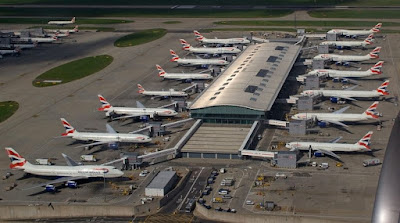Capacity & Tunneling Area
Airport Capacity:
It is the number of aircraft movements which an airport can process within a specified period of time with average delay to the departing aircraft within the acceptable time limit.
The following factors affect the airport operating capacity:
- Single Runway
- Parallel Runway
- Intersecting Runway
- Non-Intersecting Runway
Runway Capacity:
It is defined as the ability of a runway system to accommodate aircraft landing and take offs.
Expressed as operations/hour or operations per year.
Saturation Capacity:
The ultimate or saturation capacity of a runway is the maximum number of aircraft that can be handled during a given period under conditions of continuous demand.
Gate Capacity:
A Gate is defined by an aircraft parking spcae, adjacent to a terminal building and used by a single aircraft for the loading and unloading of passengers, baggage and mail.
Hence Gate Capacity is defined as the ability of a specified number of gates to accommodate aircraft loading and unloading operations under conditions of continuous demand.
.

Comments
Post a Comment
Thank You for visiting, if you have any questions please feel free to ask: